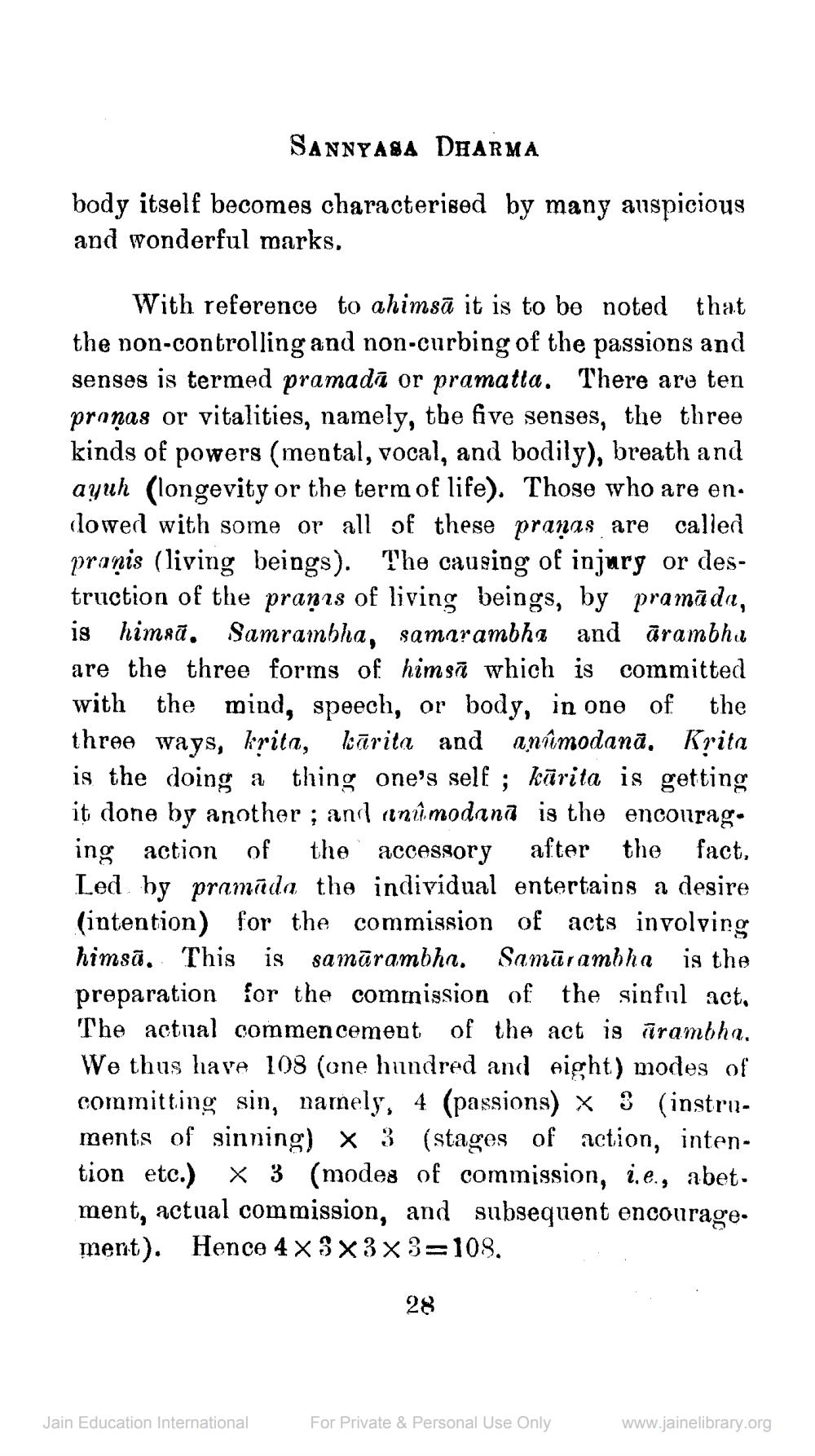________________
SANNYASA DHARMA
body itself becomes characterised by many auspicious and wonderful marks.
With reference to ahimsa it is to be noted that the non-controlling and non-curbing of the passions and senses is termed pramada or pramatta. There are ten pranas or vitalities, namely, the five senses, the three kinds of powers (mental, vocal, and bodily), breath and ayuh (longevity or the term of life). Those who are en. dowed with some or all of these pranas are called pranis (living beings). The causing of injury or destruction of the pranes of living beings, by pramāda, is himsā. Samrambha, samarambha and arambha are the three forms of himsa which is committed with the mind, speech, or body, in one of the three ways, kṛita, kārita and anûmodanā. Krita is the doing a thing one's self; kārita is getting it done by another; and anûmodana is the encourag. ing action of the accessory after the fact. Led by pramada the individual entertains a desire (intention) for the commission of acts involving himsa. This is samārambha. Samārambha is the preparation for the commission of the sinful act, The actual commencement of the act is arambha. We thus have 108 (one hundred and eight) modes of committing sin, namely, 4 (passions) x 3 (instruments of sinning) x 3 (stages of action, intention etc.) X 3 (modes of commission, ie, abet. ment, actual commission, and subsequent encouragement). Hence 4×3×3×3=108.
Jain Education International
28
For Private & Personal Use Only
www.jainelibrary.org




